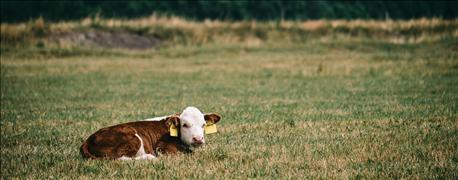September 3, 2015

Evaluating cow performance is an essential part of operating a beef herd, and according to Kevin Gould, Michigan State University Extension, this can be done with simple calculations that start with the adjusted weaning weight formula and index.
Weaning weights are used to evaluate differences in growth potential of calves and the milking ability of dams. In order to evaluate differences in weaning weights, individual calf records must be adjusted to a standard basis.
The Beef Improvement Federation recommends that weaning weights be standardized to 205 days-of-age and a mature age-of-dam basis.

Weaning weights are used to evaluate differences in growth potential of calves and the milking ability of dams (Thinkstock/Thomas Zsebok Images)
Weaning weights should be taken when a contemporary group (same sex, age range and management) of calves averages about 205 days of age.
Adjusted weaning weights should be calculated for calves within an age range of 160 to 250 days of age. Records on calves weaned outside this range should be given a special management code and handled as a separate management group; they should not be adjusted for age of dam because appropriate correction factors are not available, Gould says.
Adjusted 205-day weaning weight is computed on the basis of average daily gain from birth to weaning, using the following formula:
Adjusted 205 day weaning weight = (weaning weight - birth weight / weaning age) x 205) = birth weight + age of dam adjusted
If the actual birth weight is not available, the appropriate standard birth weight designated by the respective breed association of the calf’s sire may be used.
Individual animal records for adjusted 205-day weaning weight and adjusted 205-day weaning weight ratio should be calculated and reported separately for bulls, steers and heifers. The weaning weight ratio is a valuable number and should be calculated with the following formula:
Adjusted 205 day weaning weight ratio = (individual adjusted 205 day weaning weight/ group average adjusted 205 day weaning weight) x 100)
Adjusted 205-day weaning weight ratios document each animal’s percentage deviation from the average of its contemporaries and are useful in ranking individuals within each sex when making selections, Gould says.
For weight ratios to be of value, contemporaries should be herd mates, similar in age and raised under the same management and environmental conditions.
Source: Kevin Gould, Michigan State. "Calculating calf-adjusted weaning weights and herd indexes."
For more information, visit msue.msu.edu.
You May Also Like




